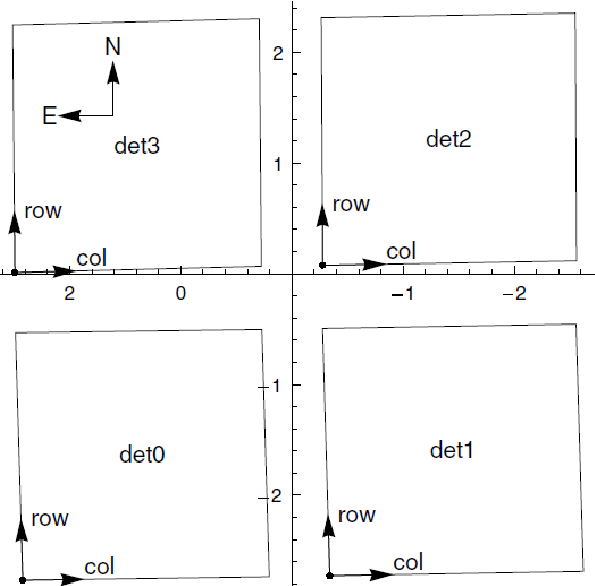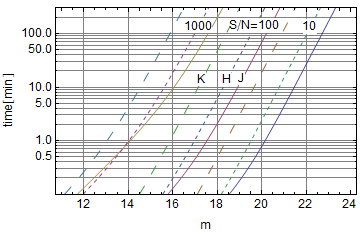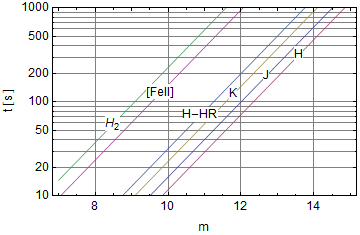For Observers
Frequently Asked Questions
- Is the high-resolution mode ever used?
- No. The best seeing has been 500 mas. Therefore the high-resolution mode, which samples at 40 mas/pixel, is not useful.
- Do I need to refocus when I change filters?
- No. The focus does not depend on wavelength, since the optics with power are all mirrors. Since the filters are placed where the beam in parallel, they do not shift the focus.
- What is the shortest exposure time?
- 10 s.
- How long does it take to change filters?
- The filters are on a wheel with 17 slots. It takes at most 90 s to turn the wheel completely. The J, H, & K filters are adjacent on the wheel. It takes about 10 s to change between them.
- How long does it take to read an image?
- It takes 20 s to read an image pair, 10 s to read to measure the amount of charge without light, and 10 s to read after integrating.
- How long does it take to change the focal ratio?
- Changing focal ratio takes about 1 minute, but you would do this very infrequently.
- How large is the image distortion?
- The skew and distortion: The maximum is 24 pixel, and the RMS is 10 pixel.
- Where can I find the image distortion?
- That information is in the FITS header.
- How does the instrument dither?
- The observer sets the dither radius. Each time the command "to xxx" is executed, the telescope points to a random location on the circumference of the circle centered on the nominal position.
Quick Reference
Geometric Parameters
| Pixel size | 66 mas |
| Field width (edge-to-edge) | 5.04' |
| Field width (single detector) | 2.25' (2048 pix) |
| Blank strip | 0.56' |
| Min. Exposure Time | 10 s |
| Skew and distortion | 24 pix max; 10 pix RMS |
| Distortion (after removing skew, quadratic terms, and barrel distortion) | 0.16 pix max; 0.03 pix RMS |
Detector Parameters
| Parameter \ Detector | 0 | 1 | 2 | 3 |
|---|---|---|---|---|
| Gain [e/DU] | 4.9 | 3.6 | 3.8 | 4.6 |
| Detector noise [e] | 15 | 11 | 14 | 16 |
| Saturation [kDU] | 30 | 33 | 33 | 26 |
| Parameter1 \ Filter | J | H | K |
|---|---|---|---|
| QE (photons above atmosphere → electrons) | 0.35 | 0.41 | 0.41 |
| Rate for 15th mag star [ke s-1] | 11 | 15 | 7.5 |
| Sky [ke s-1arcsec-2] | 3.5 | 23 | 46 |
1The parameters are for detector 0. The values for detectors 1-3 are similar.
Filter List
| Filter | Wavelength [μm] | Width [μm] | Width [km/s] |
|---|---|---|---|
| He I | 1.082 | 0.092 | 2570 |
| [Fe II] | 1.640 | 0.014 | 2630 |
| cont_1 | 2.040 | 0.032 | 4660 |
| He I / C IV | 2.065 | 0.029 | 4150 |
| H2 | 2.116 | 0.031 | 4380 |
| cont_2 | 2.140 | 0.030 | 4260 |
| Brγ | 2.162 | 0.021 | 2870 |
| cont_3 | 2.208 | 0.032 | 4310 |
| CO | 2.331 | 0.071 | 9100 |
| Y | 1.020 | 0.100 | |
| J | 1.236 | 0.186 | |
| H | 1.632 | 0.287 | |
| K | 2.148 | 0.307 |
Detector Map

Caption - Map of the 4 detectors on the sky. Note the gap between detectors. The scale is in arcmin. The axes show the direction of increasing rows and columns. The orientation in the sky can change since the instrument is mounted at a Nasmyth port. The map is stored in the FITS header.
Exposure time

Caption - Exposure time for a given S/N ratio for a star of magnitude m for the J (solid lline), H (dashed line), and K band (long dashed line). The seeing is 0.7arcsec(FWHM), and the diameter of the aperture is 1.0arcsec. The temperature, which affects the K band, was 13C. For the narrow-band filters, the approximate factors by which to increase the exposure time are 22 for HeI λ10830 (J band), 13 for [FeII] λ16400 (H band), 11 for HeI/CIV λ20650 (K band for this and the following), 10 for H2 λ21170, 19 for Brγ λ21620, and 4.3 for CO λ23310.
Saturating exposure time

Caption - Saturating exposure time for a star of magnitude m. The cases are the J, H, K, H2, and [FeII] λ16400 filters for the wide-field mode and the H filter for the high-resolution mode. The seeing is 0.7arcsec FWHM. Detector 0 is shown; the saturating exposure times differ by less than 10% for all of the detectors.
Current Time
- UTC time:
- East Lansing:
- Santiago:
- (from Time.is!)


